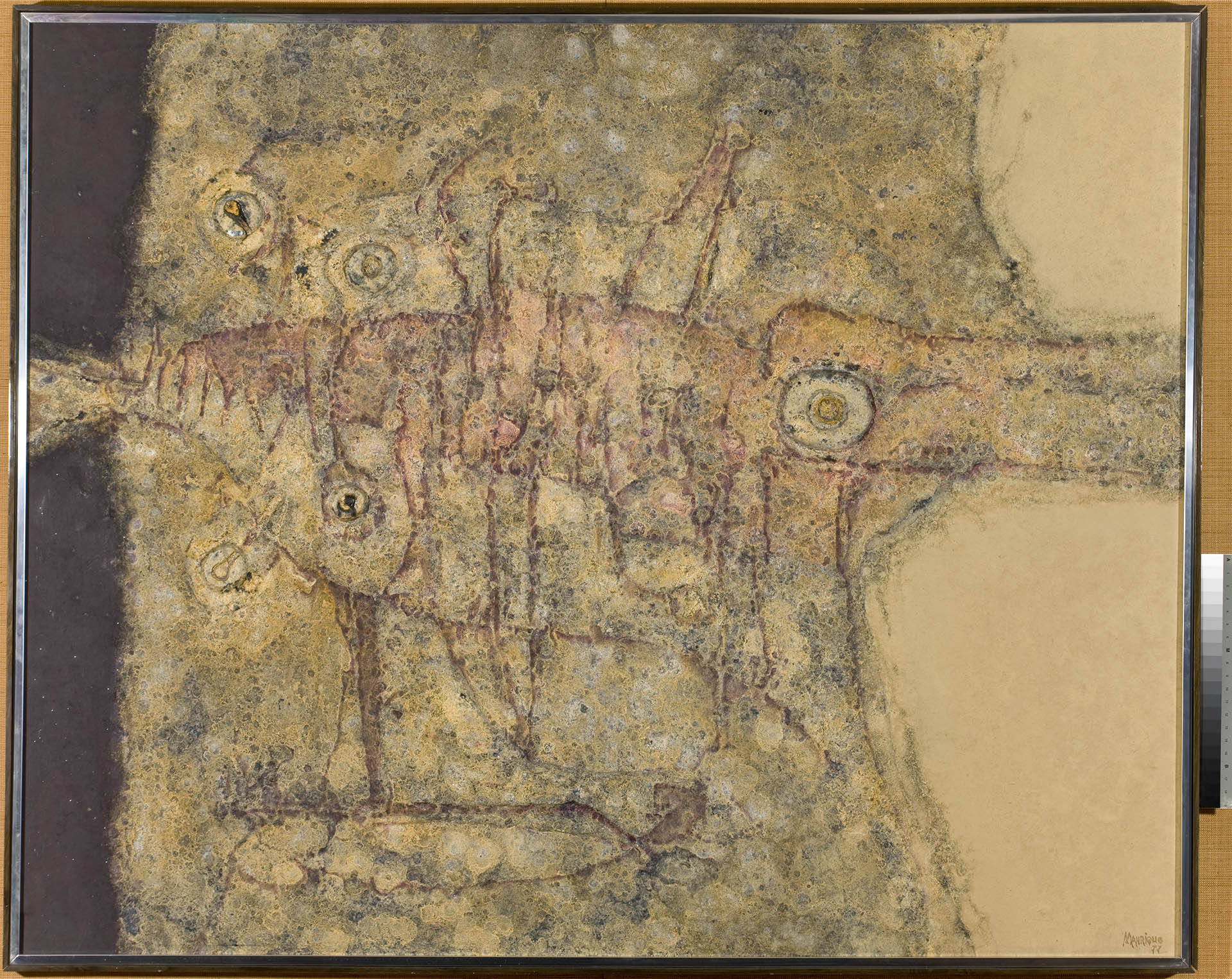
César Manrique (Lanzarote, 1920–1992)
Under Jable
1977
WORK INFORMATION
Mixed media on canvas, 131 x 162 cm
OTHER INFORMATION
Signed in the lower right-hand corner: "Manrique 77" Inscription on the reverse: "Bajo jable / 162 × 131"
César Manrique was, in many ways, one of the most original Spanish artists of the 20th century. Though traditionally classified as an "informalist"—despite the fact that most of his matter-rich work was produced after the heyday of European Art Informel and American Abstract Expressionism—recent studies have broadened critical horizons to analyse his oeuvre from perspectives situated between Art Informel, Pop Art and Arte Povera. It can also be evaluated from other points of view. We do not know if Manrique's sojourn in the United States from 1965 to 1968 exposed him to the artistic proposals labelled as Land Art, which strove to establish a new harmony between art and nature. What is clear is that after 1966, in a slightly different way, this became one of the fundamental goals of his art and even his life: the last two decades of Manrique's career were centred on the island of Lanzarote, to which he returned for good in 1968. From that moment on his efforts were devoted, with as much intensity as to painting and sculpture if not more so, to preserving the island's nature parks and villages from the aggressive encroachment of tourism and the conversion of some of its most iconic spots into spaces paradoxically designed to attract a certain type of visitor. The transformation of Lanzarote into a different and, in a sense, idealised place became the fundamental work of his life. And in many cases, as we see in Bajo jable [Under Jable], when Manrique made a painting in the final decades of his life, he chose to evoke the unique textures of lava as the material (and spiritual) incarnation of the island. In this case the reference is explicit, as jable is the name given to a type of volcanic sand unique to the Canaries. "I try to be like the free hand that forms geology," Manrique would say.
The tactile quality of Manrique's work and his special three-dimensional treatment of matter, both of which are clearly illustrated in Under Jable, connect the artist not only to the surface or skin of his native island but also to the work of other artists of his own generation, who also defy classification as mere "informalists" in the strictest sense. By way of example, we might mention Lucio Muñoz or his fellow Canary Islanders Martín Chirino and Manuel Millares, some of whose motifs also remind us of how heavily archaeology, palaeontology and orography weighed on the artistic sensibility of the painters and sculptors of their generation. In Manrique's case, the two realities—the emotional and physical presence of the island of Lanzarote and the affinity with the artistic sensibility of his time—are inseparable. [María Dolores Jiménez Blanco]

